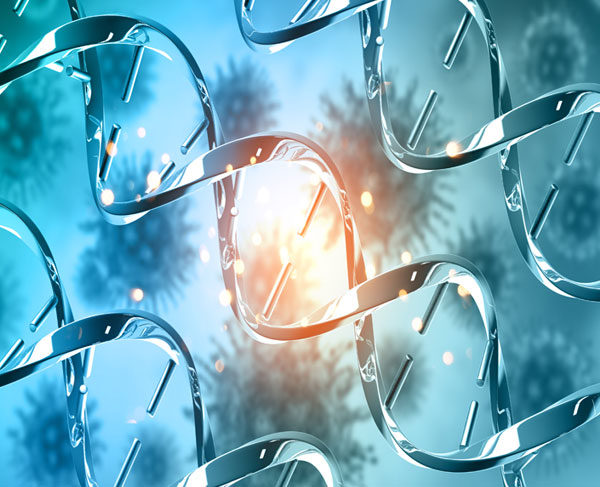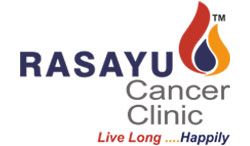Cancer Types
- Bladder Cancer
- Bone Cancer
- Breast Cancer
- Cervical Cancer
- Colorectal Cancer
- Endometrial Cancer
- Head & Neck Cancer
- Kidney Cancer
- Laryngeal Cancer
- Leukaemia
- Liver Cancer
- Lung Cancer
- Multiple Myeloma
- Nasopharyngeal Cancer
- Non-Hodgkin's Lymphoma
- Oesophagus Cancer
- Oral Cancer
- Ovarian Cancer
- Pancreatic Cancer
- Prostate Cancer
- Skin Cancer
- Stomach Cancer
- Testicular Cancer
- Thyroid Cancer
Opening Hours
- Monday - Saturday 10:00 am - 07.00 pm

Bladder Cancer
- The Bladder is a pouch that stores urine after it is produced by the kidneys.
- Malignant growth in the bladder occurs in the specialized cell lining of the urinary bladder. This is called Bladder Cancer.
- As per GLOBOCAN statistics 2018, incidence of bladder cancer was 549,393 cases (3%) in a year, and deaths were 199,922 (2.1%), its incidence stands fifth among all cancers and fourth among men.
- The advance stage 5-year survival rate for people with bladder cancer is 5%.
- It is seen more in males than females, and more often in elderly over age of 70 years.
- Following are the types of Bladder Cancer
– Urothelial carcinoma (transitional cell carcinoma)
– Squamous cell carcinoma
– Adenocarcinoma
– Small cell carcinoma
– Sarcoma
Causes
The exact cause of bladder cancer is unknown, but there are risk factors linked to the disease :
Smoking
- Smoking is the major risk factor for Bladder cancer. About 1 in 3 cases of Bladder cancer may be caused by smoking.
- Cigarette smoke and its chemicals are carcinogenic, hence prolonged history of smoking increases the risk.
- Inhaled smoke reaches the blood stream and into kidneys for filtration. These chemicals are potential cause to the bladder cancer.
Age
Bladder cancer is more common in older people; rarely seen under 40 years of age.
Gender
Bladder cancer is more common in men than in women.
Infection
- Repeated urinary infections and untreated bladder stones leads to cancer called Squamous Cell Bladder Cancer.
- People who are paralyzed have more bladder infections and a higher risk of getting bladder cancer.
Prior Treatment of Cancer
Radiotherapy to the pelvis for earlier treatment with a chemotherapy drug called cyclophosphamide can increase the risk of Bladder cancer.
Carcinogenic agents with sufficient evidence in humans :
These include chemicals used in dye factories, rubber, leather, textiles, printing, gasworks, plastics, paints, and in other chemical industries.
- Many of these chemicals are now banned, but it can take up to 25 years after exposure for Bladder cancer to manifest.
- As per International Agency for Research On Cancer (IARC), there is sufficient evidence to suggest that Bladder Cancer is caused by :
– Aluminium production and exposure to its process
– 4 Aminobiphenyl
– Arsenic and inorganic arsenic compounds.
– Auramine production process
– Benzidine
– Chlornaphazine
– Cyclophosphamide
– Magenta production
– 2-Naphthylamine
– Paint industry
– Rubber manufacturing industry
Agents with limited evidence in humans
- 4-Chloro-ortho-toluidine
- Coal-tar pitch
- Dry cleaning
- Diesel engine exhaust
- Occupational exposure of hairdressers and barbers
- Printing processes soot
- Tetrachloroethylene
- Textile manufacturing
Signs & Symptoms
- Blood in Urine (hematuria) – Bright Red or Cola colored urine
- Frequent urination
- Painful urination
- Back pain
- Pelvic pain etc.
Physical Examination and Investigations
- Check general signs of health, including signs of disease, such as unusual lumps, enlargement etc.
- A history of the patient’s health habits and past illnesses and treatments will also taken into consideration.
- Urinalysis: A test to check the color of urine and its contents, such as sugar, proteins, RBC and WBC etc.
- Urine cytology: A laboratory test to check for abnormal cells.
- Cystoscopy: A procedure is done to observe bladder and urethra with the help of scope for abnormalities and a piece of tissue is removed for further tests if required.
- Intravenous pyelogram (IVP): A series of x-rays of the kidneys after passing a contrast dye to illuminate the ureters and bladder for any tumor visibility.
- Biopsy: A piece of tissue, viewed under a microscope to check for malignant growth. A biopsy is usually done during cystoscopy. It may be possible to remove the entire tumor during biopsy.
- Whole body PET Scan: To review further local and or distant spread of Bladder Cancer.
Treatment
- To plan personalised treatment for each individual patient as every individual is different even if they have the same type of cancer.
- To improve health related quality of life (QOL) in all types and stages of cancer patients.
- To plan for partial or total regression of tumour depending on the nature of tumors.
- To increase overall survival (OS) of patients.
- To increase disease free survival (DFS) where complete resection of tumour is achieved.
- To provide a treatment option to patients who are refractory to conventional treatments like chemotherapy / radiotherapy / immunotherapy etc.
- To reduce the rate of growth of the tumor in recurrent and advanced staged cases.
- To increase progression free survival in advance cases.
- To reduce impact of symptoms related to progression of disease.
- To improve confidence of patients.
- To provide palliative support in end-of- life cancer cases.
- To add happiness and extension of life to cancer patients.
- To compliment other therapies like chemotherapy, radiotherapy in a synergistic way.
- To reduce severity or adverse effects of other conventional treatment. This reduces incidence and frequency of hospitalization.
- It is pertinent to note that Rasayu Cancer Clinic does not claim or blame anything while communicating any aspect to cancer patients.
- Rasayu Cancer Clinic focuses on Ayurveda fundamental based therapies.
- Rasayu Cancer Clinic believes in continuous improvement in service and science.
- Rasayu Cancer Clinic always advocates patient centric approach which leads to long and happy life of cancer patients.
- Every patient has a right to choose the therapy.
- Rasayu Cancer Clinic never imposes Rasayana therapy on patients but helps them to take the right decision, hence making patients/ relatives well aware about the disease and possible outcomes along with its risk benefit and cost benefit ratios.
- Rasayu Cancer Clinic is well connected with global updates in cancer care and therapies, through advisors and collaborations with national and international institutes.
Surgery
A. Partial removal of Bladder
This surgery is preferred if the cancer has invaded the muscle but is not very large and located in one place.
Nearby lymph nodes may also be removed and examined for spread. This surgery is rarely used.
B. Complete removal of bladder
- If the cancer spread is larger or is in more than one part of the bladder, a radical cystectomy with extended lymph node dissection is preferred.
- This operation removes the entire bladder and nearby lymph nodes. In men, the prostate may also be removed, while in women, the ovaries, fallopian tubes, the uterus and a small portion of the vagina are often removed along with the bladder.
C. TURBT – Trans Urethral Removal of Bladder Tumor.
Chemotherapy
- Chemotherapy uses certain cytotoxic drugs to kill cancer cells.
- Chemotherapy is given in different ways; the drug is given directly into the area to be treated, it is called local chemotherapy.
- In other cases the chemo drugs are given in pills or injected into a vein (IV) or muscle (IM), the chemotherapeutic agents then enter the bloodstream and travel throughout the body, this is called systemic chemotherapy.
- Chemotherapy challenges/limitations in Bladder Cancer – Click Here
- Side effects of Chemotherapy – Click Here
- Adverse drug reactions (ADRs) of Chemotherapy – Click Here
Radiation Therapy
- This therapy uses high-energy radiation to kill cancer cells.
- External beam radiation therapy is commonly used to treat Bladder cancer where radiation is directed from a source outside of the body on the cancer.
- Radiotherapy side effects – Click Here
- Long term effects of radiotherapy – Click Here
Immunotherapy
- Immunotherapy is used in specific cases of bladder cancer.
- However efficacy of the treatment is still not clear as per the National Library of Medicine, since there is a need for improved biomarkers.
- Cost of this treatment is high and many times does not fit into cost benefit ratio.
- Side effects – Click Here
- Risk and benefits of immunotherapy – Click Here
- Side effects of immunotherapy – Click Here
- Bladder cancer general information – Click Here
Rasayu Cancer Clinic Rasayan Treatment Protocol – To know more please click here
Rasayana Therapy is recommended for those :
- Who voluntarily opted for this treatment as their first choice.
- Who are disenchanted with the past treatments.
- Who do not see any other options of treatments.
- Who are looking for personalized treatment plan.
- Who desire a convenient home-based oral therapy which is easy for consumption.
- Who are susceptible to acquire hospital borne infections / complications, hence not willing to be hospitalised.
- Who are looking for favourable risk benefit ratio.
- Who desire to improve Quality of Life benchmarks based on global standards and monitored regularly.
- Who wants to be involved in decision making for choice of treatment.
- Who are willing to be involved in monitoring the efficacy of Rasayana Therapy.
- Who believe in the transparency of the process by conducting regular investigations by biochemical parameters/ hi tech imaging techniques like PET scan etc.
- Who are looking for professionals being sensitive to the patient, the care givers and the family.
- Who desire to take even with other treatments including Chemotherapy / Radiotherapy.
Disclaimer : This Website contains certain links such as You Tube links, research paper links / website links / audio visuals/ internet information already available in public domain. The information contained in the audio visuals is meant for use by qualified Medical Professionals. The content of the links etc has been made available for informational and educational purposes only. Rasayu Cancer Clinic and its associates do not make any warranties with respect to the accuracy, applicability, fitness, or the completeness of the content of such links etc. The information contained in such links represents the views and opinions of the original creator of such links and are not views endorsed by the Rasayu fraternity.


